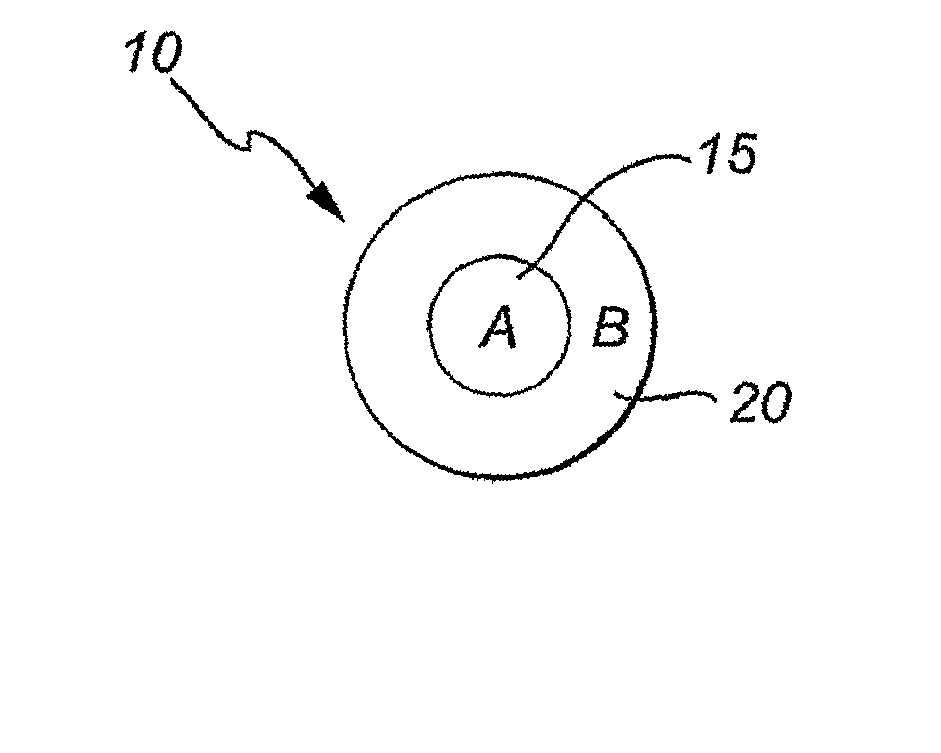Layered Nanoparticles
a nanoparticle and nanoparticle technology, applied in the field of layered nanoparticles, can solve the problems of insufficient blood circulation, poor physical stability, and inability to provide long enough blood circulation, and achieve the effect of preventing the end of use, and reducing the number of cancers
- Summary
- Abstract
- Description
- Claims
- Application Information
AI Technical Summary
Benefits of technology
Problems solved by technology
Method used
Image
Examples
examples
Materials
[0185] NP-9 [nonylphenoxypolyethoxyethanol, C9H19C6H4(OCH2CH2)nOH, n=9] (Fluka: MW 630, HLB 13.0) was used as received (i.e. contains less than 0.08 wt. % of water as determined by Karl Fisher titration). Tetraethylorthosilicate (TEOS) (98%) from Sigma-Aldrich was also used as received. Organic solvents (cyclohexane, 1-pentanol, acetone, chloroform) were ACS spectrophotometric grade (99+%) (Sigma-Aldrich). All other chemical reagents used were A.R. grade. High purity Milli-Q water (Millipore) was used for the preparation of all aqueous solutions; its resistivity was above 18.2 MΩ cm. All samples were stored in the dark.
Preparation of Encapsulant (Dopant) Solution:
[0186] Preparation of Copper (II) tetramine nitrate: Copper (II) tetramine nitrate solution was prepared by adding 25 wt. % ammonia dropwise to a known quantity of copper (II) nitrate-hydrate, until a dark blue solution was formed. The solution was transferred to 100 mL volume flask and the volume was adjusted ...
PUM
| Property | Measurement | Unit |
|---|---|---|
| diameter | aaaaa | aaaaa |
| particle size | aaaaa | aaaaa |
| diameter | aaaaa | aaaaa |
Abstract
Description
Claims
Application Information
 Login to View More
Login to View More - R&D
- Intellectual Property
- Life Sciences
- Materials
- Tech Scout
- Unparalleled Data Quality
- Higher Quality Content
- 60% Fewer Hallucinations
Browse by: Latest US Patents, China's latest patents, Technical Efficacy Thesaurus, Application Domain, Technology Topic, Popular Technical Reports.
© 2025 PatSnap. All rights reserved.Legal|Privacy policy|Modern Slavery Act Transparency Statement|Sitemap|About US| Contact US: help@patsnap.com



